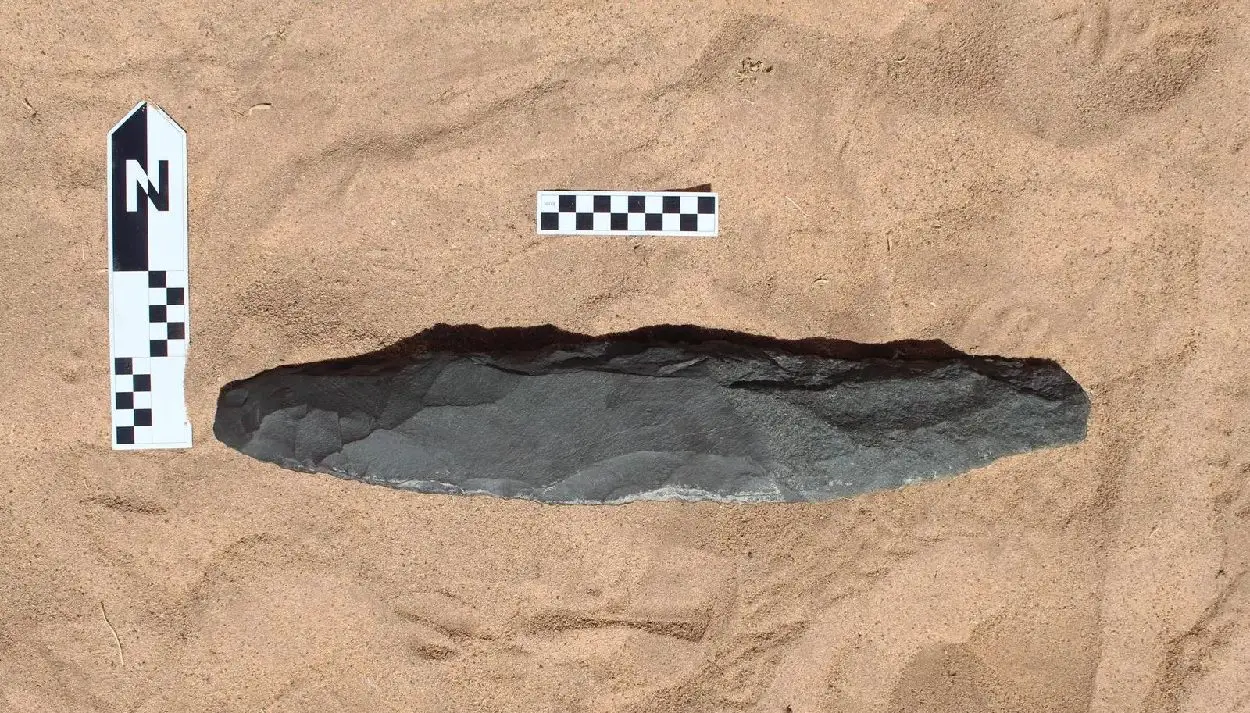According to a press statement by the Royal Commission for Al-Ula Governorate, archaeologists have discovered a giant hand axe dating from the Palaeolithic period, approximately 200,000-years-ago.
The stone implement was discovered at the Al-Qurh archaeological site, located in Wadi al-Qura north of Medina. The archaeological mission, led by Dr Can and Gezim Aksoy from the heritage consulting company TEOS Heritage, have been conducting a study of the region to investigate evidence of human presence from ancient times.
According to the announcement, the hand axe is made from soft basalt and measures 51.3 cm, one of the largest examples of a biface hand axe ever recorded. The axe has been worked on both sides to produce a strong edge for cutting or chopping.
It is believed that this type of tool was usually held in both hands and may have been used for butchering animals and cutting meat, however, ongoing studies are still underway to determine the function. Other giant axes found elsewhere from this period have been suggested to instead have a symbolic function, a clear demonstration of strength and skill.
A member of the Royal Commission for AlUla said: “This discovery is only one of more than a dozen similar stone tools all dating back to the Palaeolithic era, and further scientific research is expected to reveal additional details about the origins and function of these tools.”
Dr Aksoy, director of the project, said” “This biface is one of the most important findings of our ongoing study of the Qurh plain. This amazing stone tool measures over half a meter and is the largest example of a series of stone tools discovered at the site. An ongoing search for comparisons around the world has not found a biface of the same size. Therefore, this could be one of the largest bifaces ever discovered.”
Header Image Credit : Royal Commission for Al-Ula





